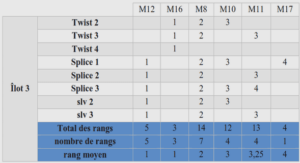The impact of population aging on public finance in the European Union
Although the Great Financial Crisis1 has had a significant impact on the global economy, it is the demographic transition that is still one of the biggest challenges facing the European Union (EU) and other developed countries. The baby boom, which in Europe occurred between 1950 and 1970, and the subsequent decline in the fertility rates with an increase in longevity, implicitly indicated significant changes in the total population with respect to its age structure. Consequently, public budgets and other macroeconomic variables are already affected with this structural shift of population. The economic crisis emphasized the importance of fiscal policy in preventing and restraining short-term fluctuations, but the impact of the demographic shift on public finance is less discussed. In the coming dec- ades, the demographic transition will re-shape the economic environment in both developed and developing countries. Concerning public budgets, demographic changes will modify the structure and the size of public expenditures and revenues. In order to sustain the current welfare- state models in Europe, economic agents must be prepared for long-term reforms in their legislative and taxation systems. With the ever-growing elderly part of popula- tion, the current and future labor force could expect increases in their income and indirect taxes, such as value added tax (VAT) and duties. Also, in order to finance pension benefits, the taxation of capital (i.e., tax on capital income, tax on dividends and tax on real estate) will gain in importance. Overall, the extent to which labor and capital are taxed may change in the future with demographic transition.
the pupil-to-teacher ratio, will bring into consideration the efficiency of allocating the current level of expenditures for education. Ultimately, public investments can be affected if resource allocation dilemma arises between investments and social protection expenditures. On the other hand, the size and the structure of budget revenues are unlikely to remain equal over the course of time as the population becomes older. The revenues accumulated through the value added tax are af- fected by changes in aggregate consumer behavior and the revenues from per- sonal income tax are influenced as a result of the shifts in the labor market. The aim of this paper is to estimate the influence of demographic aging on public finance in 25 EU member states2 with time observations from 1995 to 2014. We use 4-year intervals to obtain medium-term dynamics corrected for short-run eco- nomic fluctuations. The static empirical model used in Callen, Batini and Spata- fora (2004), and Yoon, Kim and Lee (2014) is expanded by the introduction of lagged dependent variables and more control variables. Previous studies which included demographic variables considered demographic changes as exogenous, denying the plausible reverse causality in the medium-run between fiscal and de- mographic variables. Thus, we introduce demographic variables as endogenous in the model. Employing a robust one-step system-GMM estimator, we find evi- dence of the positive effect of the elderly share on old-age pension expenditure, social protection expenditure, overall government expenditure and revenue. The overall impact on the budget balance is negative as influence is higher in case of government expenditure. On the other hand, the rise in the young population has a significant, and positive, impact only on health expenditure. The main research question is whether population aging has an impact on certain categories of the public budget, as well as the overall budget balance, in light of the endogenization of demographic variables. The research hypothesis predicts a positive impact of population aging on all fiscal variables, thus following the results of the previous literature, but with more accurate estimates given by the introduction of an enhanced methodology.



